The human factor in Azure security: Are people the weakest link or our greatest asset?¶
In 2021, a critical vulnerability known as "ChaosDB" was discovered in Microsoft's Azure Cosmos DB, a globally distributed, multi-model database service. This flaw allowed attackers to gain access to the primary keys of Cosmos DB accounts, potentially compromising entire databases. The root cause? A simple misconfiguration in the Jupyter Notebook feature of Cosmos DB. This incident starkly highlights how human error can undermine even the most advanced cloud security infrastructures.
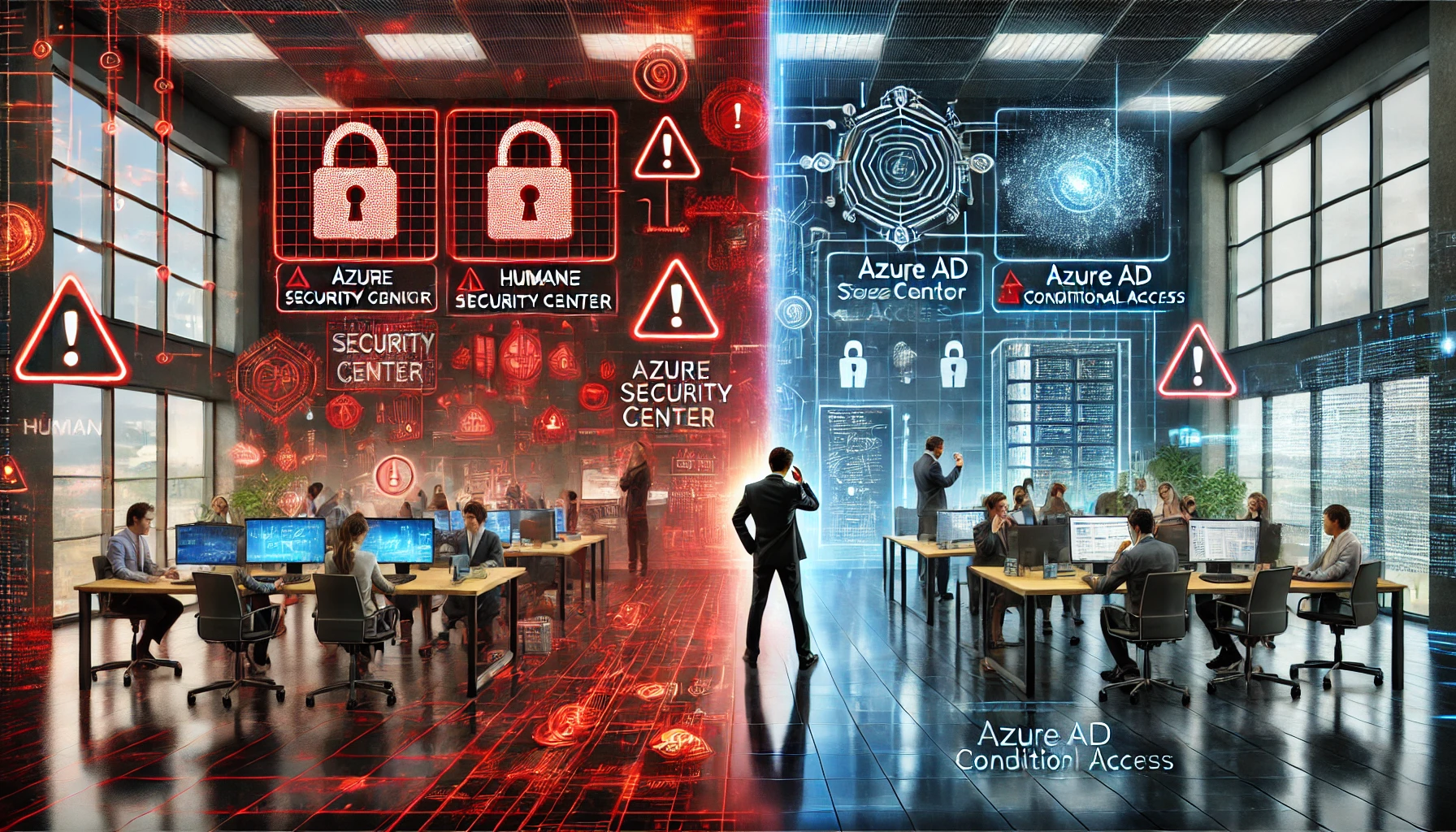
While technology in the cloud environment, such as Microsoft Azure, can be fortified with cutting-edge security measures, the human element remains the most critical and vulnerable aspect of cybersecurity. Despite robust technological defenses, it is often human error-whether through misconfigurations, weak passwords, or inadequate monitoring-that opens the door to security breaches. This blog post will explore the pivotal role of people in cloud security, examining both the risks posed by human error and the potential for employees to serve as the first line of defense. By understanding and addressing these human factors, organizations can better protect their cloud assets and ensure a more secure digital environment.
The rising tide of cloud adoption and security risks¶
The digital transformation journey for many organizations has increasingly involved a shift towards cloud services, driven by the need for scalability, flexibility, and cost-efficiency. Among the prominent players in the cloud market, Microsoft Azure has emerged as a leading platform, offering a comprehensive suite of services that cater to diverse business needs. However, this rapid adoption of Azure and other cloud services has brought with it a new wave of security challenges and risks, particularly related to human error.
Trend analysis: The rapid adoption of cloud services¶
Over the past decade, cloud computing has transitioned from a novel technology to a fundamental component of modern IT infrastructure. According to a report by Gartner, global spending on public cloud services is projected to grow 21.7% in 2023, reaching $597.3 billion. Azure, being one of the top three cloud providers alongside AWS and Google Cloud, has seen significant growth in its user base. This surge in cloud adoption is largely driven by the benefits it offers: enhanced operational efficiency, improved scalability, and the ability to leverage advanced technologies such as artificial intelligence and machine learning.
However, this widespread adoption has not been without its downsides. The same features that make the cloud appealing-its accessibility, vast storage capabilities, and ease of deployment-also make it a prime target for cyber threats. The shift to cloud services has expanded the attack surface, making it more challenging to secure data and applications. As organizations migrate more critical workloads to the cloud, the potential impact of security breaches has escalated, putting sensitive data and business operations at risk.
The rise in security incidents¶
The increased reliance on cloud services has coincided with a rise in security incidents. A study by McAfee revealed that the average organization experiences 12.2 cloud security incidents per month, a number that underscores the frequency and severity of these events. These incidents range from data breaches and account hijacking to sophisticated attacks exploiting cloud vulnerabilities. Notably, many of these breaches are not the result of advanced hacking techniques but stem from human errors and misconfigurations.
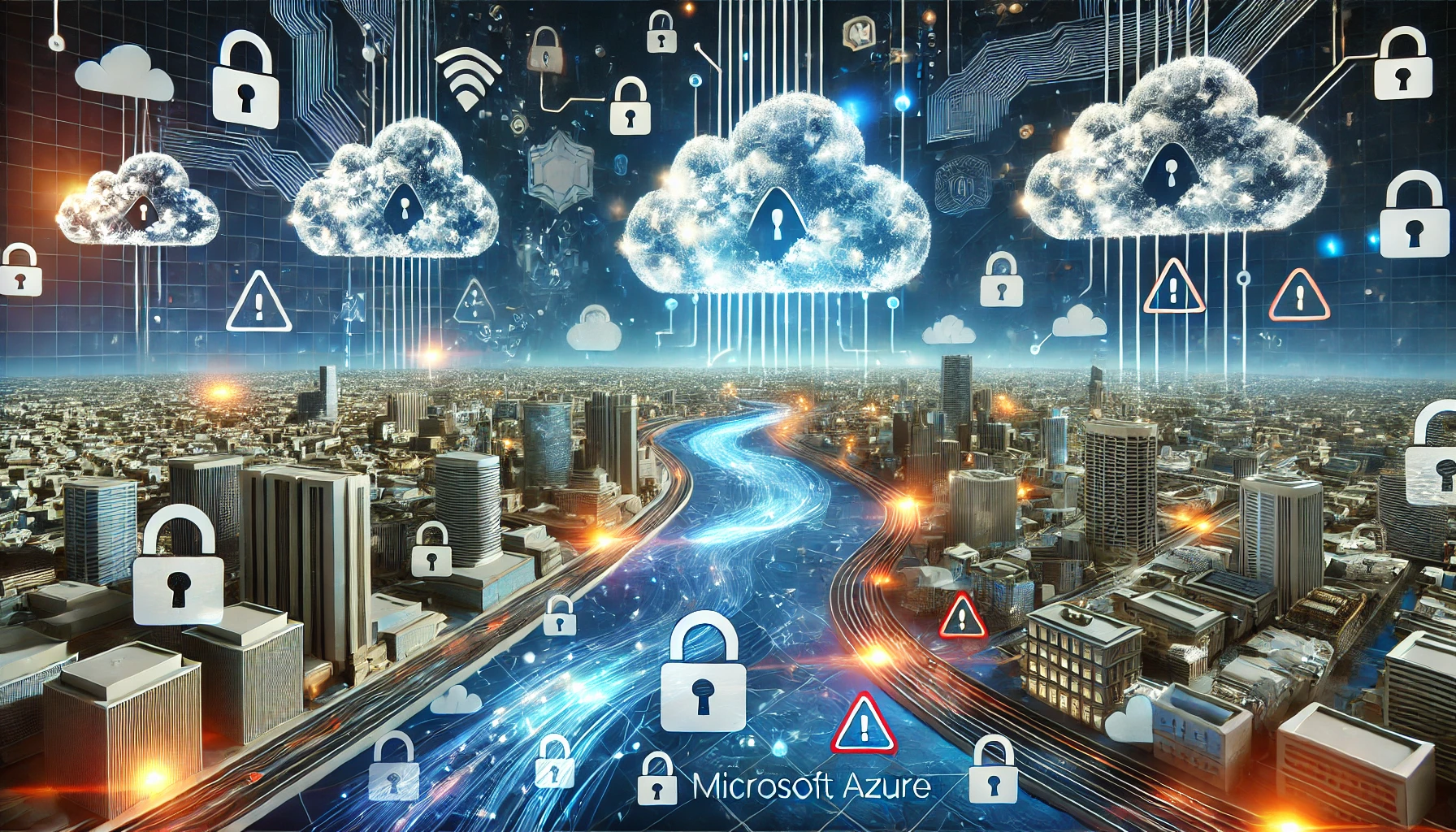
Case studies: notable Azure security breaches¶
-
Capital One data breach (2019): One of the most high-profile cloud security incidents involved Capital One, where a former AWS employee exploited a misconfigured web application firewall to access the data of over 100 million customers. Although this breach occurred on AWS, it serves as a cautionary tale for Azure users as well, highlighting how simple misconfigurations can lead to significant data breaches.
-
Docker Hub data breach (2019): In April 2019, Docker Hub, a widely-used repository for Docker container images, suffered a security breach that exposed sensitive data of approximately 190,000 users. The breach involved unauthorized access to a database that stored user information, including usernames, hashed passwords, and some GitHub and Bitbucket tokens used for auto-building Docker images. The root cause of this breach was attributed to insufficient security measures and misconfigured access controls on the affected database. This incident highlights the importance of securing both the cloud infrastructure and the applications and services running on it. For Azure users, it serves as a reminder to implement robust security practices, including proper access control configurations, regular security audits, and the use of strong encryption for sensitive data.
-
Aadhaar data leak (2018): Another significant incident involved the exposure of Aadhaar data-India's national identification number system-hosted on Azure. Security researchers found that sensitive data, including personal identification information, was accessible due to misconfigured cloud storage. This breach underscored the critical importance of proper configuration and monitoring of cloud resources.
These case studies illustrate that human error remains a predominant factor in cloud security breaches. Whether it’s through misconfigured settings, insufficient access controls, or inadequate monitoring, the actions (or inactions) of individuals managing cloud environments can significantly impact an organization's security posture.
As organizations continue to migrate to cloud platforms like Azure, understanding and mitigating the security risks associated with this transition becomes paramount. While the cloud offers numerous benefits, it also requires a heightened focus on security practices and the human element involved in managing these environments. By learning from past incidents and prioritizing comprehensive security strategies, organizations can better safeguard their cloud assets against the growing tide of cyber threats.
Human error - The achilles heel¶
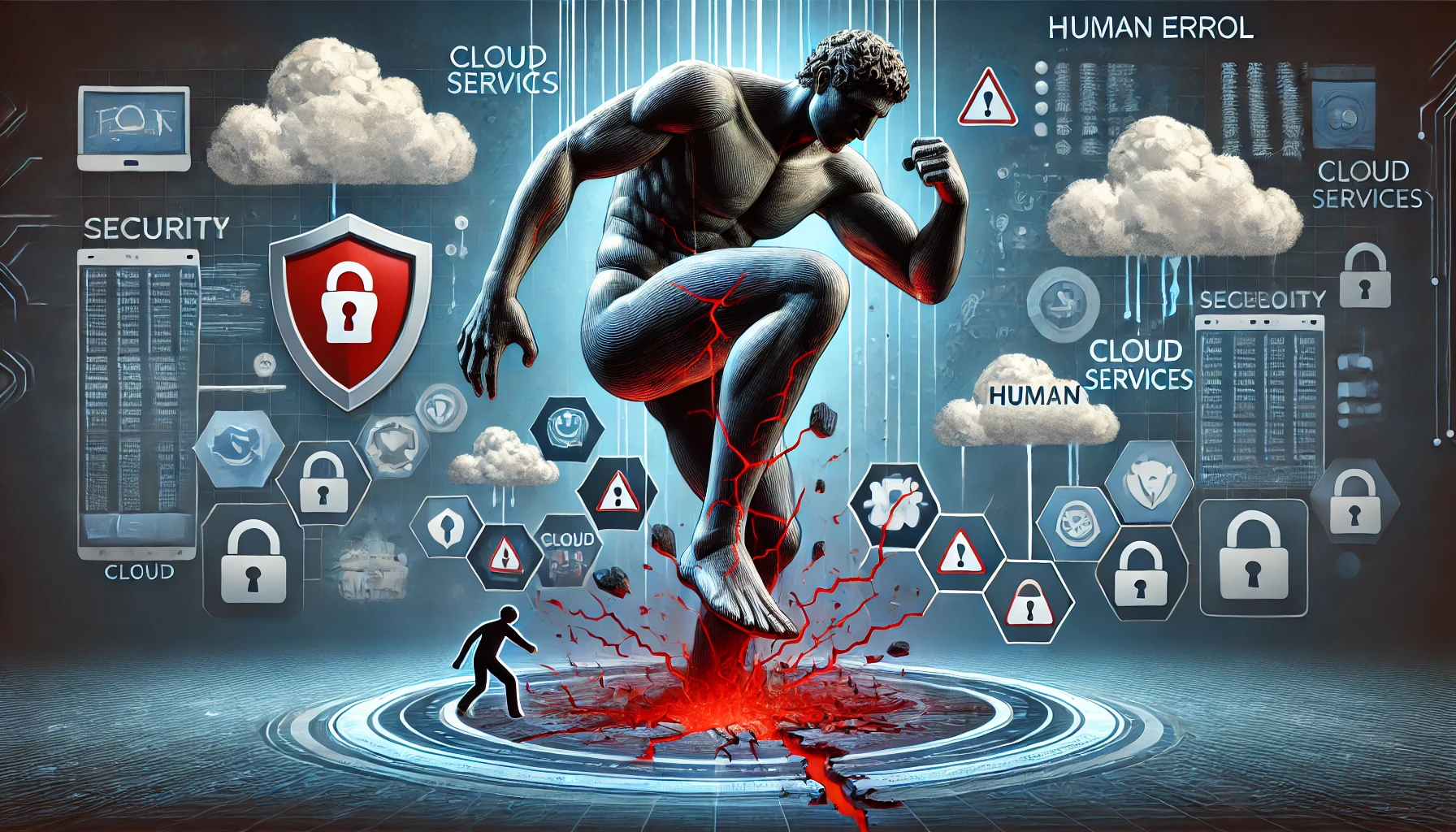
In the realm of cybersecurity, technological advancements can only go so far. The human element remains a critical, and often vulnerable, component of the security ecosystem. As organizations increasingly rely on cloud services like Microsoft Azure, human errors have emerged as significant risk factors. These mistakes, whether due to lack of knowledge, oversight, or negligence, can lead to severe security breaches with far-reaching consequences.
Have you identified the most common human errors that could compromise your cloud security, and what steps are you taking to mitigate them?
Common mistakes¶
-
Misconfigurations: One of the most prevalent issues in cloud security is the misconfiguration of cloud resources. This can include improperly set access controls, publicly accessible storage buckets, and incorrectly configured virtual machines. Misconfigurations often occur because cloud environments are complex and require a deep understanding of both the platform and the specific security settings.
-
Weak passwords: Despite ongoing awareness campaigns, weak passwords and not using MFA remain a common vulnerability. Employees may use easily guessable passwords, reuse passwords across multiple accounts, or fail to update them regularly. This makes it easier for attackers to gain unauthorized access through brute force attacks or credential stuffing.
-
Inadequate monitoring: Effective security requires continuous monitoring to detect and respond to threats in real time. However, many organizations fail to implement adequate monitoring solutions. This can result from a lack of resources, insufficient training, or the complexity of managing and interpreting security logs. Without proper monitoring, suspicious activities can go unnoticed until significant damage has been done.
-
Poorly managed sccess controls: Granting excessive privileges to users is another common mistake. Employees might be given more access than necessary for their roles, violating the principle of least privilege. This amplifies the risk if an account is compromised, as attackers can potentially access sensitive information and critical systems.
-
Phishing and social engineering: Human susceptibility to phishing and social engineering attacks continues to be a major issue. Even with robust security measures in place, an employee clicking on a malicious link or providing sensitive information to a seemingly legitimate request can compromise the entire network.
Consequences¶
The repercussions of these human errors can be severe and multifaceted, affecting various aspects of an organization:
-
Data breaches: Misconfigurations and weak passwords often lead directly to data breaches. Unauthorized parties can access sensitive information, including personal data, financial records, and intellectual property. This exposure can result in identity theft, financial fraud, and loss of competitive advantage.
-
Financial losses: The financial impact of human errors in cybersecurity can be staggering. Costs associated with data breaches include not only the immediate expenses of investigation and remediation but also regulatory fines, legal fees, and compensation to affected parties. Additionally, businesses may suffer from operational disruptions and lost revenue during the recovery period.
-
Reputational damage: Trust is a critical asset for any organization. Security breaches erode customer confidence and can lead to lasting reputational damage. Negative publicity, loss of customer loyalty, and the potential for decreased market share are significant risks that accompany security failures.
-
Regulatory compliance issues: Many industries are subject to strict regulatory requirements regarding data protection and privacy. Human errors that lead to security breaches can result in non-compliance with regulations such as GDPR, HIPAA, and CCPA. This non-compliance can attract substantial fines and legal penalties, further compounding the financial and operational impacts.
-
Operational disruptions: Security incidents often necessitate immediate and extensive responses, including incident investigation, system shutdowns, and recovery efforts. These disruptions can hinder normal business operations, causing delays, reducing productivity, and impacting service delivery.
Human error is undeniably the Achilles heel of cybersecurity, particularly in the complex and dynamic environment of cloud services like Azure. While technology can provide robust defenses, the human element requires equal attention and investment. Comprehensive training programs, stringent access controls, continuous monitoring, and a culture of security awareness are essential to mitigate the risks associated with human mistakes. By addressing these vulnerabilities proactively, organizations can better protect their assets and ensure a resilient security posture.
People as the first line of defense¶
In the ever-evolving plane of cybersecurity, technology alone cannot safeguard an organization's assets. The human element plays a crucial role in defending against threats, and when properly equipped with knowledge and skills, employees can become an organization's most effective security asset. Transforming employees from potential liabilities into proactive defenders requires comprehensive training and awareness programs.
What measures have you implemented to ensure your employees are well-trained and aware of their role in maintaining cloud security?
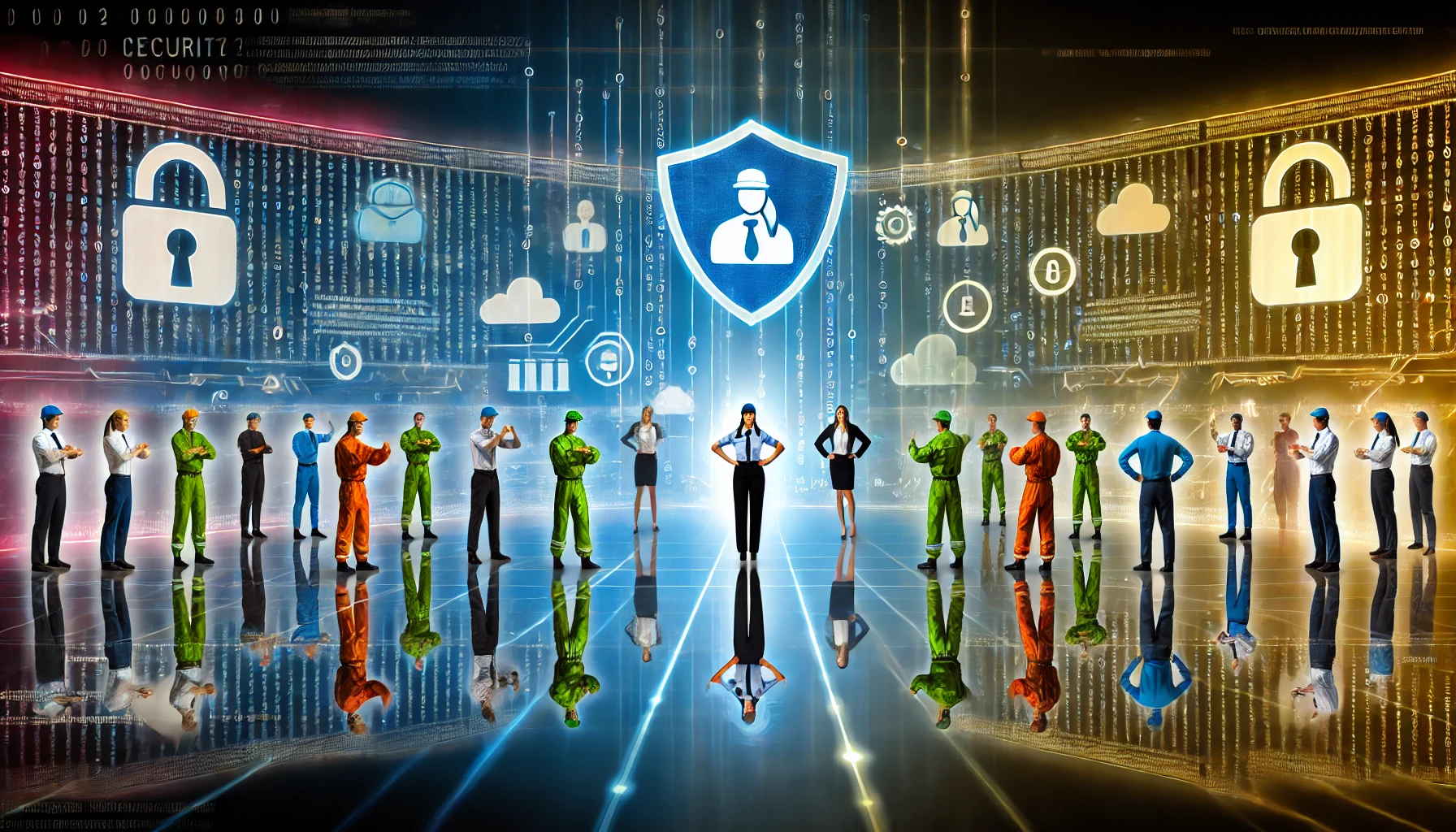
Training and awareness¶
Proper training and awareness programs are the cornerstone of a robust cybersecurity strategy. They empower employees to recognize and respond to threats, thereby reducing the risk of security breaches caused by human error. An informed and vigilant workforce can act as the first line of defense against cyber threats.
1. Empowering employees: Education enables employees to understand the importance of cybersecurity and their role in maintaining it. When employees are aware of the potential risks and the impact of their actions, they are more likely to adhere to security protocols and take proactive steps to protect sensitive information.
2. Reducing vulnerabilities: Many cyber attacks exploit human vulnerabilities, such as susceptibility to phishing emails or weak password practices. Training programs that focus on these areas can significantly reduce the likelihood of successful attacks. By teaching employees to recognize phishing attempts, use strong passwords, and follow security best practices, organizations can mitigate these common vulnerabilities.
3. Encouraging a security-first mindset: Awareness programs foster a culture of security within the organization. When employees prioritize security in their daily activities, it creates an environment where security is integral to the business process, rather than an afterthought. This cultural shift is essential for sustaining long-term security efforts.
Best practices¶
Implementing effective training programs requires a strategic approach that engages employees and continuously reinforces security principles. Here are some best practices for training staff:
1. Regular phishing simulations: Conducting regular phishing simulations helps employees identify and respond to phishing attempts. These simulations mimic real-world phishing attacks, providing practical experience and reinforcing the importance of vigilance. By analyzing the results, organizations can identify areas where further training is needed and measure the effectiveness of their awareness programs.
2. Comprehensive security workshops: Organize in-depth security workshops that cover a wide range of topics, including password management, data protection, secure communication practices, and incident response procedures. These workshops should be interactive and tailored to the specific needs and roles of employees, ensuring that the training is relevant and engaging.
3. Continuous learning opportunities: Cybersecurity is a dynamic field, with new threats and technologies emerging regularly. To keep pace, organizations should provide continuous learning opportunities for employees. This can include online courses, webinars, and access to up-to-date resources and materials. Continuous education ensures that employees remain knowledgeable about the latest security practices and threats.
4. Clear and accessible policies: Develop clear and concise security policies that are easily accessible to all employees. These policies should outline the organization’s security expectations, procedures, and incident reporting processes. Regularly review and update these policies to reflect new threats and regulatory requirements, and ensure employees are aware of any changes.
5. Role-based training: Tailor training programs to the specific roles and responsibilities of employees. For instance, IT staff may require advanced training on network security and incident response, while non-technical staff might focus on recognizing social engineering attacks and safe data handling practices. Role-based training ensures that employees receive relevant and practical information that they can apply in their daily tasks.
6. Engaging and interactive content: Use engaging and interactive training methods to maintain employee interest and participation. Gamified learning, scenario-based exercises, and interactive modules can make training more enjoyable and effective. When employees are actively engaged, they are more likely to retain information and apply it in real-world situations.
People are a critical component of an organization's cybersecurity defenses. With proper training and awareness programs, employees can transition from being the weakest link to becoming the first line of defense against cyber threats. By implementing best practices such as regular phishing simulations, comprehensive security workshops, and continuous learning opportunities, organizations can empower their workforce to recognize and mitigate security risks effectively. In doing so, they create a culture of security that enhances their overall resilience against cyber attacks.
The role of azure security tools¶
As organizations increasingly rely on cloud services, the complexity of managing and securing these environments has grown significantly. Microsoft Azure offers a robust suite of security tools designed to mitigate risks, including those arising from human error. These tools not only enhance the security posture of cloud environments but also support a synergistic approach where human vigilance is augmented by sophisticated technology.
Integration of people and technology¶
While technological aids are indispensable in securing cloud environments, they are most effective when used in conjunction with human oversight and intervention. A synergistic approach where human vigilance is enhanced by sophisticated tools ensures a more resilient security posture.
1. Enhancing Human Vigilance: - Continuous Education and Training: Employees must be continuously educated about the latest security tools and practices. Understanding how to use Azure Security Center or Azure AD Conditional Access effectively can empower them to better protect their environments. - Empowering Security Teams: Security teams equipped with advanced tools like Azure Sentinel can more efficiently monitor, detect, and respond to threats. These tools provide valuable insights that enable security professionals to make informed decisions and take proactive measures.
2. Reducing Human Error: - Automating Routine Tasks: By automating repetitive and routine security tasks, Azure tools reduce the likelihood of human error. This allows security teams to focus on more strategic and complex issues that require human judgment. - Providing Clear Guidance: Tools like Azure Security Center provide clear, actionable recommendations for improving security configurations. This guidance helps users understand and implement best practices, reducing the risk of misconfigurations.
3. Facilitating Rapid Response: - Real-Time Threat Detection and Mitigation: With tools like Azure Sentinel, organizations can detect and respond to threats in real time. Automated alerts and predefined response actions enable swift mitigation of potential security incidents, minimizing the impact. - Comprehensive Visibility and Control: Integrating various Azure security tools provides a holistic view of the security landscape. This comprehensive visibility allows for better coordination and faster response to security threats.
Azure's suite of security tools plays a critical role in mitigating human error and enhancing the overall security of cloud environments. However, the true strength of these tools is realized when they are integrated into a broader strategy that includes continuous human vigilance and proactive management. By combining the power of technology with the insights and judgment of skilled security professionals, organizations can build a more resilient and secure cloud infrastructure. This synergistic approach ensures that while technology provides robust defenses, human intelligence and awareness remain at the forefront of cybersecurity efforts.
Building a culture of security¶
Cybersecurity is no longer just the responsibility of IT departments; it must be embedded into the very fabric of an organization's culture. Building a culture of security involves fostering an environment where every employee understands the importance of cybersecurity and takes an active role in maintaining it. This cultural shift begins with proactive leadership and extends to the empowerment of employees to take ownership of security protocols.
What steps are you taking to build and maintain a culture of security within your organization?
Leadership and culture¶
The foundation of a security-first culture is strong, proactive leadership. Leaders set the tone for the organization's attitude towards security and play a crucial role in embedding security into the organizational ethos.
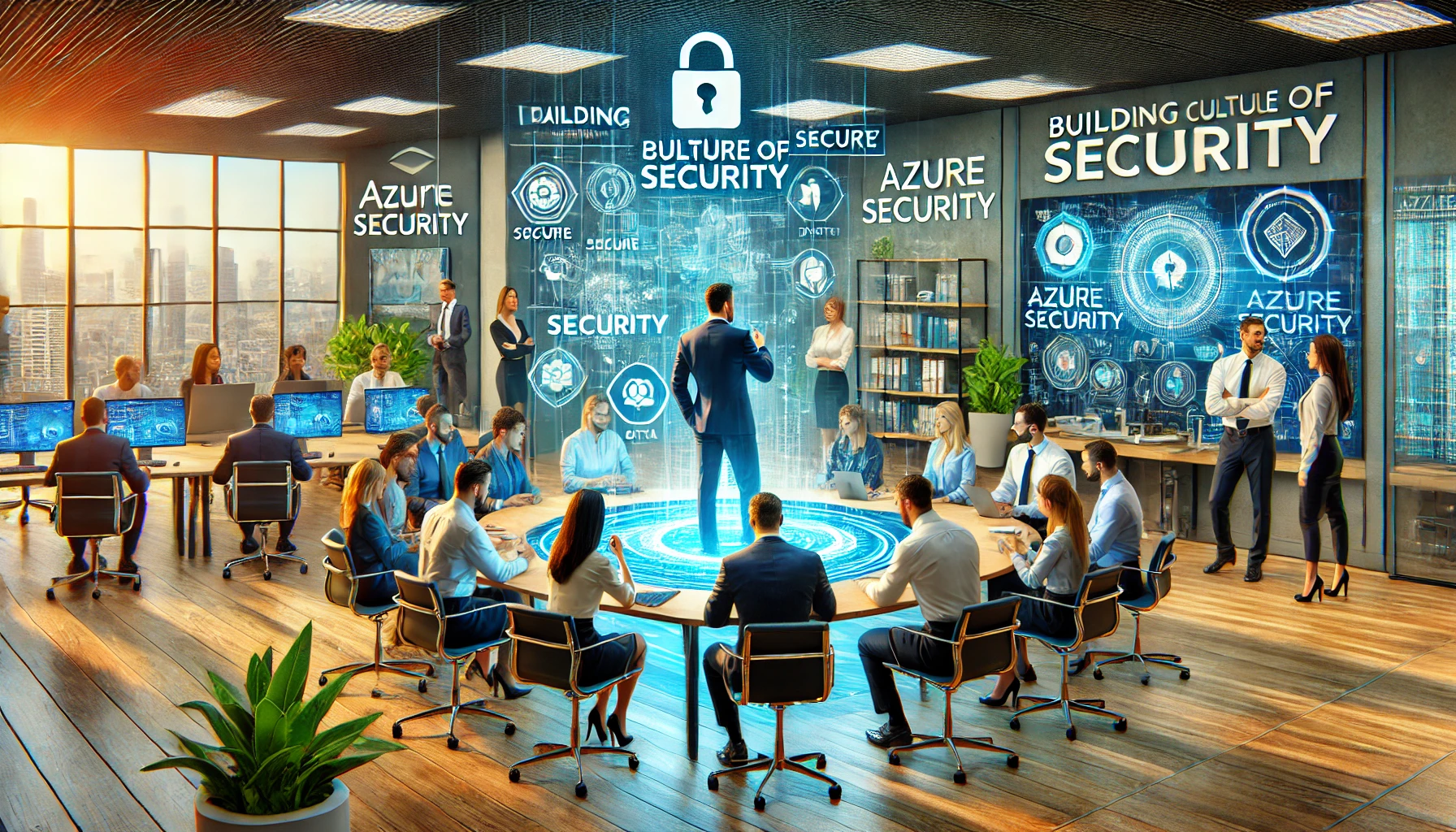
1. Setting the tone from the top: Leadership must prioritize cybersecurity and communicate its importance to the entire organization. When executives and managers visibly support and participate in security initiatives, it signals to employees that security is a critical and valued aspect of the business.
2. Establishing clear policies and procedures: Leaders should ensure that comprehensive security policies and procedures are in place and clearly communicated to all employees. These policies should cover everything from acceptable use of technology to incident response protocols. Regularly reviewing and updating these policies to reflect the evolving threat landscape is essential.
3. Leading by example: Leaders should model the security behaviors they expect from their employees. This includes adhering to security protocols, participating in training sessions, and demonstrating a commitment to continuous improvement in security practices. When employees see leaders taking security seriously, they are more likely to follow suit.
4. Investing in security resources: Proactive leadership involves allocating adequate resources to cybersecurity. This includes investing in the latest security technologies, hiring skilled security professionals, and providing ongoing training for employees. Ensuring that the security team has the tools and support they need to effectively protect the organization is a key responsibility of leadership.
Empowerment and responsibility¶
Building a culture of security requires empowering employees at all levels to take ownership of security practices and feel responsible for safeguarding the organization's assets.
1. Encouraging active participation: Employees should be encouraged to actively participate in the organization's security efforts. This can be achieved through regular security training sessions, workshops, and interactive exercises like phishing simulations. When employees are engaged in these activities, they are more likely to internalize the importance of security and apply best practices in their daily work.
2. Fostering open communication: Creating an environment where employees feel comfortable reporting security concerns or suspicious activities is crucial. This involves establishing clear reporting channels and ensuring that employees know how and where to report potential security issues. Importantly, organizations must foster a culture where such reports are welcomed and acted upon promptly.
3. Rewarding positive behavior: Recognizing and rewarding employees who demonstrate good security practices can reinforce a security-first mindset. This could include public recognition, certificates, or other incentives for employees who complete security training, identify vulnerabilities, or contribute to improving the organization's security posture.
4. Removing fear of retribution: Employees must feel confident that reporting security incidents or mistakes will not result in negative consequences. A culture of blame and fear can lead to underreporting of incidents, which can have severe repercussions. Instead, organizations should adopt a learning-focused approach, where incidents are viewed as opportunities to improve and enhance security measures.
5. Providing continuous education: Security awareness is not a one-time event but an ongoing process. Continuous education helps keep security top of mind and ensures that employees are aware of the latest threats and best practices. This can be achieved through regular updates, refresher courses, and access to current security resources and information.
Building a culture of security within an organization is an ongoing effort that requires commitment from both leadership and employees. Proactive leadership sets the foundation by prioritizing security, establishing clear policies, and modeling good practices. Empowering employees to take ownership of security, fostering open communication, and providing continuous education further reinforce a security-first culture. When everyone in the organization understands their role in cybersecurity and feels empowered to act responsibly, the collective effort creates a robust defense against cyber threats. By integrating security into the organizational culture, businesses can better protect their assets, reputation, and future.
The future of cybersecurity in the cloud¶
As organizations continue to embrace cloud computing, the landscape of cybersecurity is undergoing rapid and profound changes. The future of cybersecurity in the cloud is shaped by an evolving threat landscape that demands continuous advancements in technology and the enhancement of people skills. Additionally, innovations in training methodologies are poised to play a critical role in preparing the workforce to tackle these emerging threats effectively.
Evolving threat landscape¶
The threat landscape is constantly evolving, with cybercriminals becoming more sophisticated and leveraging new technologies to launch increasingly complex attacks. As cloud adoption grows, so does the attack surface, presenting new challenges for cybersecurity professionals.
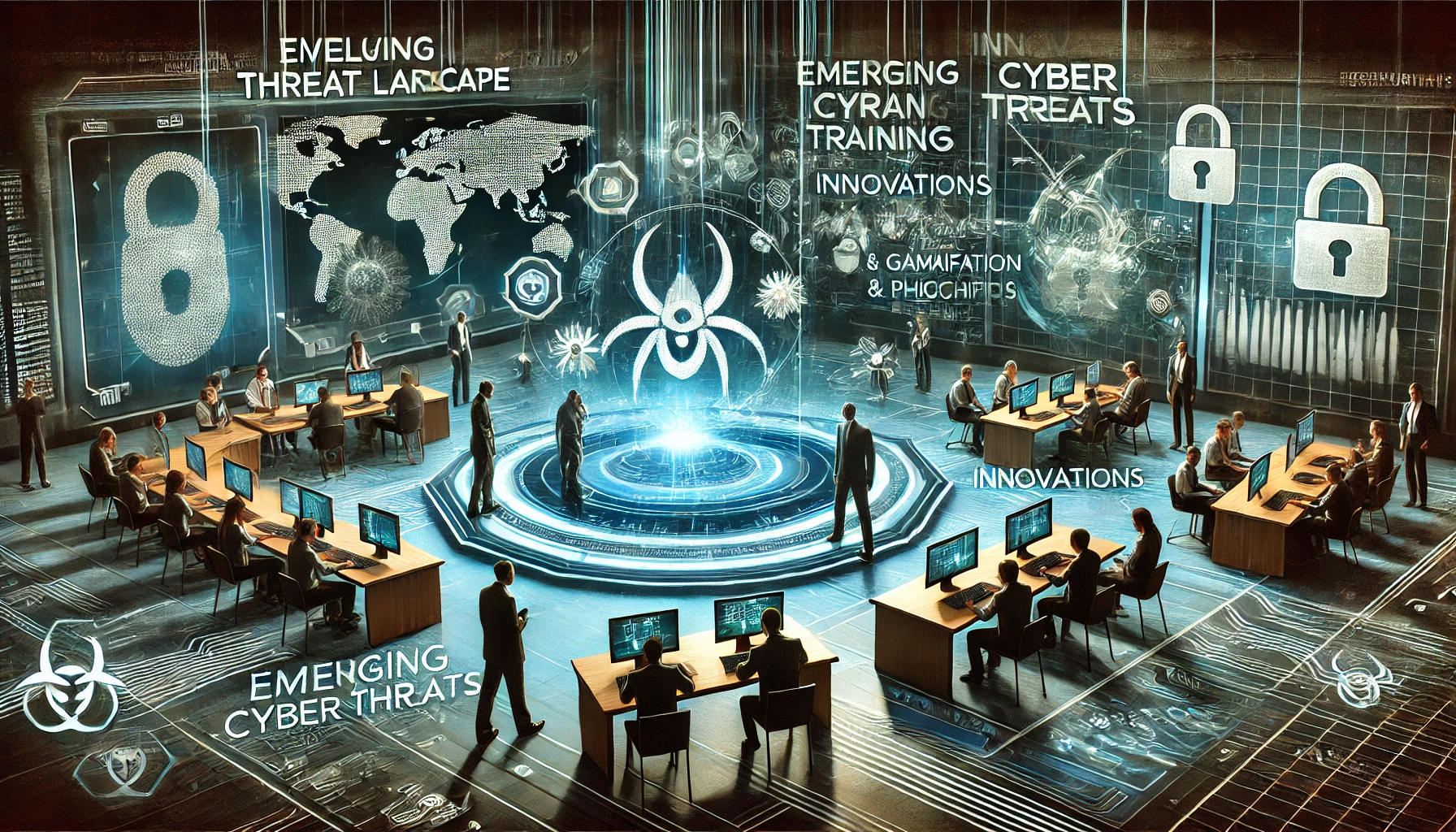
1. Advanced Persistent Threats (APTs): APTs are becoming more prevalent and sophisticated, targeting cloud environments with the aim of gaining prolonged access to sensitive data. These attacks are often state-sponsored and involve a high degree of stealth and persistence, requiring organizations to adopt advanced detection and response strategies.
2. Ransomware as a Service (RaaS): The emergence of RaaS platforms has lowered the barrier to entry for cybercriminals, enabling even those with limited technical skills to launch ransomware attacks. These attacks can cripple cloud infrastructures, encrypting critical data and demanding ransom for its release.
3. AI-driven attacks: Cybercriminals are increasingly using artificial intelligence (AI) and machine learning (ML) to automate attacks and develop more evasive malware. These technologies allow attackers to quickly adapt to security defenses and exploit vulnerabilities more effectively.
4. Supply chain attacks: As organizations rely more on third-party services and software, supply chain attacks have become a significant threat. Cybercriminals target less secure elements of the supply chain to gain access to larger networks, making it imperative for organizations to vet their vendors and ensure robust security practices throughout the supply chain.
5. Cloud misconfigurations: Despite advancements in security tools, cloud misconfigurations remain a common vulnerability. These misconfigurations can lead to unintended data exposure and provide an easy entry point for attackers. Continuous monitoring and automated compliance checks are essential to mitigate this risk.
Innovations in training¶
To keep pace with the evolving threat landscape, cybersecurity training must also evolve. Future training methodologies will leverage advanced technologies to enhance learning experiences and ensure that employees are well-prepared to address modern cyber threats.
1. Gamification: Gamification involves incorporating game-like elements into training programs to make learning more engaging and interactive. By using scenarios, challenges, and rewards, gamified training can improve knowledge retention and encourage active participation. For example, simulated cyber attack scenarios can help employees practice their response skills in a controlled and motivating environment.
2. AI-driven personalized learning: AI and ML technologies can be used to create personalized learning experiences tailored to individual employees' strengths and weaknesses. By analyzing data on employees' performance and learning styles, AI can recommend targeted training modules and adjust the difficulty level to match their progress. This personalized approach ensures that employees receive the most relevant and effective training.
3. Virtual Reality (VR) and Augmented Reality (AR): VR and AR technologies offer immersive training experiences that can simulate real-world cyber attack scenarios. These technologies can help employees develop practical skills in a safe, controlled environment. For instance, VR can be used to recreate a cyber attack on a cloud infrastructure, allowing employees to practice their incident response strategies.
4. Continuous learning platforms: Continuous learning platforms provide ongoing access to up-to-date training materials, resources, and certifications. These platforms often include forums, webinars, and collaborative tools that enable employees to stay informed about the latest threats and best practices. By fostering a culture of continuous learning, organizations can ensure that their workforce remains agile and prepared for new challenges.
5. Behavioral analytics: Leveraging behavioral analytics in training can help identify patterns and trends in employee behavior that may indicate security risks. By analyzing how employees interact with training materials and security tools, organizations can tailor training programs to address specific vulnerabilities and reinforce positive behaviors.
The future of cybersecurity in the cloud is characterized by an ever-evolving threat landscape and the need for continuous advancements in both technology and human skills. As cyber threats become more sophisticated, organizations must adopt a proactive and adaptive approach to security. Innovations in training methodologies, such as gamification, AI-driven personalized learning, and immersive technologies like VR and AR, will play a crucial role in equipping employees with the skills and knowledge they need to defend against modern threats. By embracing these advancements and fostering a culture of continuous learning, organizations can build a resilient security posture that is prepared to meet the challenges of the future.
Conclusion¶
As we navigate the complexities of cybersecurity in the cloud, it becomes increasingly clear that technology alone cannot provide a comprehensive defense. The most formidable cybersecurity strategies are those that balance technological innovation with human vigilance and ingenuity.
Call to action¶
Organizations must wake up to a harsh reality: investing in cybersecurity technology without equally prioritizing the development and empowerment of their workforce is a recipe for disaster. The cyber battlefield is not just digital; it is human. Cutting-edge security tools can protect cloud infrastructures, but they are only as effective as the people who manage and monitor them.
It's time to recognize that human error remains the most significant threat to cloud security. Investing in advanced tools like Azure Security Center, Azure AD Conditional Access, and automated compliance monitoring is crucial, but it is not enough. These investments must be complemented by robust training programs that transform employees from potential vulnerabilities into proactive defenders. Regular phishing simulations, comprehensive security workshops, and continuous learning opportunities should be non-negotiable components of an organization's security strategy. By doing so, organizations can foster a culture of security where every employee understands their critical role in protecting sensitive data and systems.
Final thought¶
Let's face it: while technology can build an impregnable fortress around our digital assets, it is the people who guard the gates. No amount of technology can substitute for the intuition, vigilance, and adaptability of well-trained human beings. Human vigilance, informed by continuous education and supported by advanced technological tools, is the key to a resilient cybersecurity posture. Employees must be empowered and encouraged to take ownership of security protocols and report suspicious activities without fear of retribution.
In the battle for cybersecurity in the cloud, complacency is the enemy. Human ingenuity and technological innovation must go hand in hand. As cyber threats evolve and become more sophisticated, the synergy between people and technology will determine our ability to protect and secure our digital future.
It’s time for organizations to stop viewing their employees as the weakest link and start investing in them as their greatest asset. By fostering a culture of security and leveraging both human and technological resources, organizations can build a robust defense that not only withstands attacks but also adapts and evolves to meet future challenges. In this way, we can ensure that our journey into the cloud is both secure and sustainable, safeguarding our digital assets and maintaining trust in an increasingly interconnected world.
The future of cybersecurity lies not in technology alone but in the empowered, vigilant, and educated human beings who stand ready to defend it. Let us invest in our people as we invest in our technology, ensuring that together, they form an unbreakable defense against the ever-present cyber threats that challenge us.